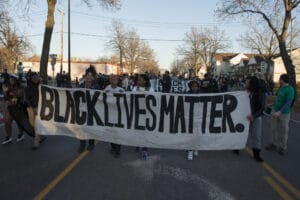It was announced on Monday 1st June that Hong Kong’s annual candlelit vigil to commemorate the 1989 Tiananmen Square Incident is to be cancelled for the first time in its 30-year history. The official reason is attributed to concerns over spreading COVID-19. However, the city has reported just over 1000 infections and four related deaths over the course of this pandemic, leading event organiser Lee Cheuk-yan to question why this peaceful demonstration has been cancelled while other recreational activities are permitted. This announcement comes after China proposed a new security law that would make it illegal to undermine the Chinese Communist Party (CCP)’s authority in Hong Kong, free speech which would normally be protected by Hong Kong’s status as a Special Administrative Region. Although the COVID-19 threat may be far from over, this has led many to suspect the ban is more politically motivated.
The vigil, which usually attracts thousands of attendees, remembers the events of the Tiananmen Square incident which saw student-led protests violently crushed by the ruling Communist Party. Demonstrations began on 15th April 1989, as thousands marched to demand reformation of the CCP to allow greater political freedoms, democracy, and to hold politicians accountable for corruption. Support for the movement grew rapidly, with approximately 1 million people gathered in the Square at the height of the demonstrations. [1] At first, the Party was unsure how to respond and did not take direct action against the protests. However, as the movement surged it became impossible to ignore, and martial law was declared at the end of May.
Ultimately, the protests ended in violent confrontation as the military closed in on Tiananmen Square on 4th June, opening fire on civilian protesters. On 5th June, the protest and its violent suppression was immortalised in the photograph of an unidentified man standing in front of a line of tanks leaving the square. The photograph of this man’s statement of defiance became one of the most iconic images of the twentieth century in the face of the government’s active suppression of events. The Chinese government has never released an official death toll, but it is estimated that several hundred to thousands of people were killed and as many as 10,000 arrested for their involvement. The fate of “Tank Man” is also unknown to this day.[2]
The incident remains an “official taboo topic” in mainland China as public discussion, memorials, and calls for justice are strictly prohibited. Amnesty International states that many people have been arrested and imprisoned for “questioning the official line.”[3] As recently as 2015, activists such as Gu Yimin have been branded as dissidents and arrested for “inciting subversion of state power.”[4]
Conversely, Hong Kong held a candlelit vigil on the first anniversary of the incident. Hong Kong was still a British colony, so its citizens could speak out against the CCP without fear of retaliation. China regained sovereignty over Hong Kong after a formal handover ceremony on 1st July 1997, under the agreement that the city would retain a “high degree of autonomy” for a transition period of 50 years. Hong Kong was named a Special Administrative Region (SAR) of the People’s Republic of China and its autonomy remains protected under the “One Country, Two Systems” principle which is enshrined in the Basic Law, a “mini-constitution” for Hong Kong.[5]
Critics believe, then, that the banning of the vigil is a deliberate violation of the Basic Law. The New York Times describes the annual memorial service as a “major rallying point for Hong Kongers worried about what they see as China’s rising repression.”[6] It is certainly not the first time in recent memory that Beijing has sought to exert power over the HKSAR. Just last year, starting from June, Hong Kong was rocked by a series of demonstrations on a massive scale in opposition of the Hong Kong government’s introduction of the Fugitive Offenders amendment bill, which would have allowed wanted criminal suspects and fugitives to be exiled to mainland China. This sparked fears that the bill would be used to give Beijing greater influence over the HKSAR, and that freedom of speech was under threat as journalists and activists could be targeted for arrest.[7] Chief Executive Carrie Lam withdrew the bill in September 2019, however, protesters said this move was “too little, too late” after multiple violent clashes with Police and reports of activists being arrested and tortured.[8] Amnesty International condemned the brutality of the Police force and voiced suspicion that undercover officers were deliberately inciting violence.[9] Many people in Hong Kong and across the world feared that the protests might end violently in a tragic repeat of the Tiananmen Square Incident.
The world instead was plunged into disarray by the COVID-19 pandemic. The protests were suspended out of necessity, but the pro-democracy spirit of the movement remains. However, a new security law has been proposed by the Central Government which critics say undermines the Basic Law and the courageous efforts of the protesters over the last several months. This new bill would make it a crime to undermine Beijing’s authority. World leaders have also criticised the bill, with a joint statement from the UK, US, Canada, and Australia stating that the legislation would be in “direct conflict with its international obligations under the principles of the legally binding, UN-registered Sino-British Joint Declaration.”[10]
It is this proposed law that has led to accusations that the CCP is deliberately using the COVID-19 pandemic for political self-interest. To many, the fact that it is this specific, contentious event that has been cancelled is a sure sign of repression.[11] The official reason given by police for the cancellation is over concerns that the event would “not only increase participants’ chances of contracting the virus, but also threaten citizens’ lives and health, thus endangering public safety and affecting the rights of others.”[12] Lee Cheuk-yan, speaking for the Hong Kong Alliance in Support of Patriotic Democratic Movements, said, “We believe this is totally unreasonable and unscientific, because everything is normal in Hong Kong. They are just using this excuse to suppress our rally.”[13]
Indeed, Hong Kong has seen a relatively low number of COVID-19 infections relative to its population of 7.4 million. Official figures have confirmed 1094 cases with four deaths linked to the virus.[14] However, on 2nd June, the government announced that social distancing regulations are to be extended by two weeks after a cluster of nine new infections were detected locally. These rules prohibit gatherings of more than eight people and imposes restrictions on catering businesses. Sophia Chan, Secretary for Food and Health, denied allegations that the extension is designed to disrupt the anniversary demonstration.[15]
Although the gathering in Victoria Park is prohibited, the Hong Kong Alliance intends to go ahead with the event in socially-distanced groups of eight. Mr Lee said that they will “mourn individually” and that “each candlelight vigil is self-initiated and does not constitute an assembly.”[16] How local Police will handle this remains to be seen. The Alliance urges members of the public in Hong Kong and worldwide to take part in an online vigil, where Mr Lee will light candles in Victoria Park and observe a minute’s silence at 20:09 local time.
It may be impossible to prove the CCP’s true motive in this matter. It is easy to agree that even as countries begin to report tentative successes against the COVID-19 pandemic, safety is still paramount and all measures must be taken to keep people safe and prevent a second wave of infections. Nevertheless, it is hard to ignore Lee Cheuk-yan on just how important these vigils are for Hong Kong and the world, as a representation of Hong Kongers’ tenacity, and as a powerful symbol for democracy and freedom of speech.[17]


